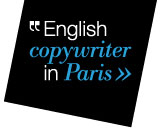Although we aren’t locked down, we aren’t really free yet either.
In the meantime, from deep within my office, I’ve been beavering way on new projects and new… blog articles!
This one aims to answer, or at least address, one of the questions that keeps coming back.
Prospective clients often want me to show them examples of either B2B or B2C content. As if the two were totally different.
On one level, I understand how it important it is for them to know that I’m used to thinking and writing from their customers’ point of view.
But on another level, I can’t push away the niggling thought that this distinction is at best simplistic and, in my humble opinion, increasingly irrelevant.
Some articles maintain that the two are radically different.
Yet, when we look closer, these differences aren’t so easy to untangle.
-
Emotion vs. facts & ROI
Many claim that B2B customers are driven by data. They want to see the proof. They want to know their investment has been worthwhile. B2C customers, on the other hand, are emotional creatures looking to be pleased, entertained and surprised.
Yet, I would argue that B2B customers are often overwhelmed with choice and information. And, that the products and services that stand out are those that also connect on an emotional level. Of course, the facts have to add up too!
B2C customers may be more whimsical when purchasing chocolate or deodorant. But they sure as hell want to know they’re making a good investment when spending €2000 on a computer or €20,000 on car. This means at least some facts, figures and evidence.
-
Statistics vs. Stories
This one leads on nicely.
According to some, B2B customers should be snared with oodles of statistics and data. The more, the better. While B2C customers are hungry for stories that echo their emotions, fears and hopes.
Once again, I can’t help feeling that this is all rather black and white. For example, stories that weave in the experiences of existing customers are one of the most powerful ways to convince businesses (as well as individuals) to sign on the dotted line.
The exact format, angle and tone of these stories may well vary, but their power to engage audiences is universal. Marketing Insider Group certainly seems to agree.
-
Information vs. conversation
Talking about tone, the way you express yourself to B2B and B2C customer is also often considered to be worlds apart. B2B has to be more formal, neutral and informative. While B2C is all about conversations.
Yet, B2B decision makers are people too. They are also turned off by stuffy texts and puffed up promises.
Sometimes, my customers suggest that the tone of voice I’ve chosen is too “B2C”. What does this actually mean? Too direct? Too focused on needs and emotions? Too effortless and enjoyable to read?
Once again, Marketing Insider Group seems to be on the same wavelength.
Convince&Convert has even written a great article on “How to Uncover a B2B Brand Voice that isn’t Boring.”
-
Now vs. later
I’m not saying B2B and B2C content are exactly the same. Don’t get me wrong. Decision-making processes are undoubtedly longer and more complex for B2B. But it would be an oversimplification to suggest that B2B customers are always slow to decide, while B2C purchase on a whim.
For any kind of customer, it’s essential to capture their attention. Right now. Otherwise you and your product or service will get swept away in a tidal wave of information.
And, for any kind of customer, it’s often also important to reassure, provide additional information and explain your service or product. This may be quick if we’re talking about something like organic fruit but usually takes longer for something like a pair of headphones, a waterproof jacket or credit card.
The more complex the offer, the longer the purchasing cycle whether for B2B or B2C. Prospects want to read all the details, compare with competitors and find out what existing customers really think. B2C customers are increasingly informed and demanding. Just like B2B customers.
The winner is…
So, there you have it. The conversion funnels, decision-making processes, push tactics & co. may be different. Product planning is a different board game. But, as a copywriter, I’m focusing on what I do and know best – content! And, B2B and B2C content clearly have far more in common than first appears.
Of course, much depends on the type of product or service you’re selling. As for the most appropriate content format, that’s a whole other blog post!
Do you fully agree? Just a little bit? Or, completely disagree?
Share your B2B vs. B2B content insights with us.
